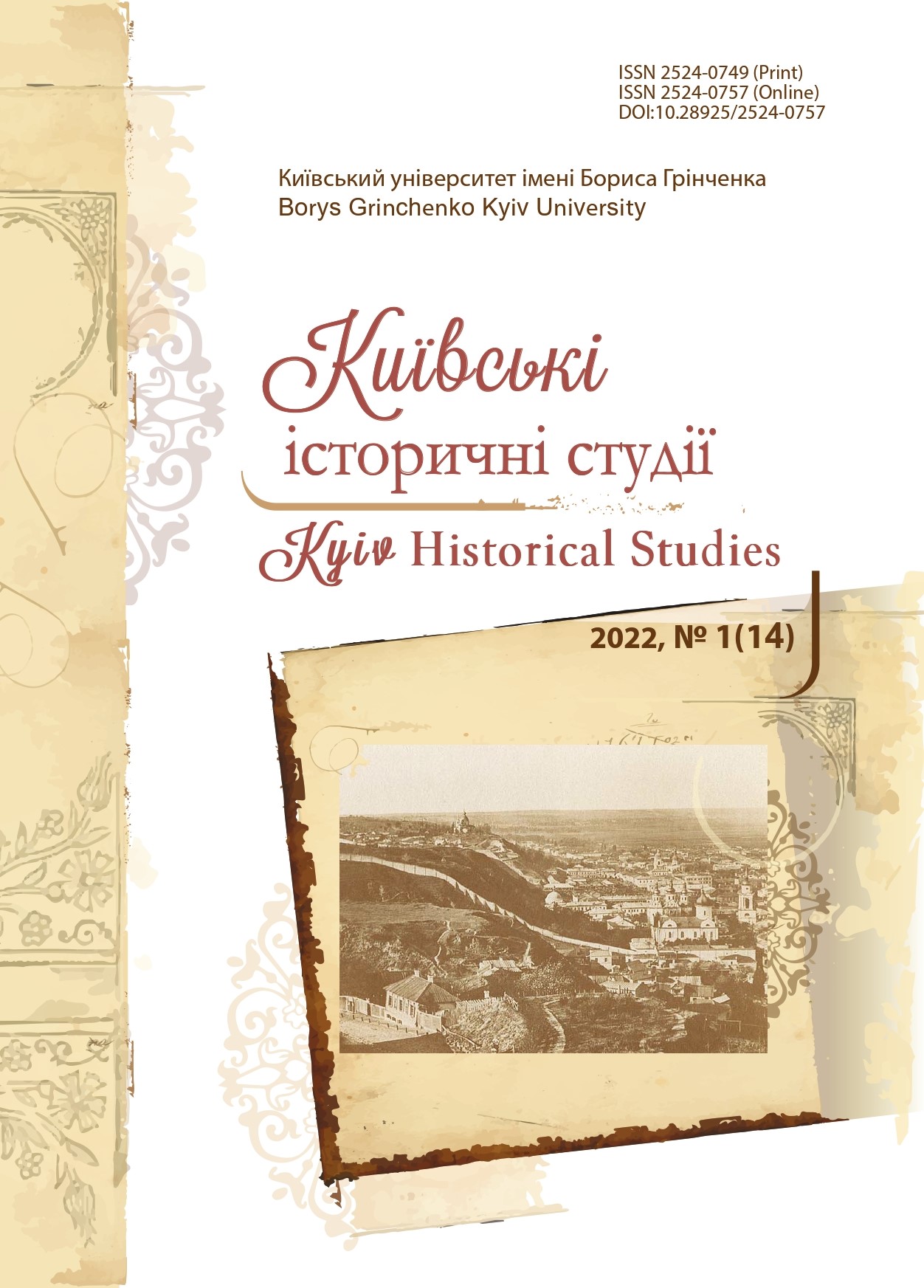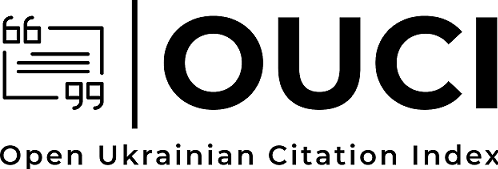Memory and Monuments: Imperial Policy and Ukrainian Society in Early 20th Century
DOI:
https://doi.org/10.28925/2524-0757.2022.19Keywords:
politics of memory, places of memory, Dnieper Ukraine, «Rada» newspaper, Alexander II, Mykola Gogol, Bohdan KhmelnytskyiAbstract
The study focuses on the issues of the imperial policy of memory and the transformations in the collective consciousness that took place in Ukrainian society under its influence in the early twentieth century. Scientific research is based on the publication of Ukrainian periodicals of the early twentieth century, in particular, the journal «Rada» and sources of personal origin. The focus is on places of remembrance that were to broadcast and consolidate the ideologies and mythologies produced by the Russian tsar in order to keep the peoples of the national suburbs included in the state as a result of the wars of aggression. In particular, such places of remembrance were the monuments to Emperor Alexander II, government official Petro Stolypin, and others. At the same time, attempts are being made to oppose such measures by the Ukrainian intelligentsia and to form its own “pantheon”. It is established that the state machine, creating in the minds of Ukrainians a kind of parallel dimension to the historical past and its interpretation, used not only significant personalities for Muscovia, but also national heroes such as Bohdan Khmelnytskyi, Taras Shevchenko and others. The imperial policy of memory caused deep distortions in the collective consciousness of Ukrainians and the objective perception and understanding of the historical process, as well as led to the loss of identity. In the early twentieth century, the Ukrainian intelligentsia, overcoming the resistance of state structures and the indifference of society, began the struggle to build a national “pantheon” that would show the roots and historical path of the people, remind of the past and form a sense of national pride of the Ukrainian people.
Downloads
References
Andriievskyi, V. (1938). Try hromady. Spohady z 1885–1917 rr. Vol. II, Lviv [in Ukrainian]. http://histpol.pl.ua/ru/biblioteka/tematicheskie-podborki/natsionalno-osvoboditelnoe-dvizhenie?id=12055 Hyrych, I. (2017). Ukrainskyi Kyiv kintsia 19 – pochatku 20 stolittia. Kyiv [in Ukrainian].
Doroshenko, D. (1949). Moi spohady pro davnie-mynule (1901–1914). Vinnipeh [in Ukrainian].
Ivaniuk, O. (2021). Proekt pamiatnyka T. H. Shevchenkovi u Kyievi: roky ponevirian. In M. Budzar (Ed). Taras Shevchenko i yoho teksty: chytannia, interpretatsiia ta komemoratsiia na mezhi 19–20 stolit, pp. 54–81, Kyiv [in Ukrainian].
Ivanyuk, O., & Mokhnatiuk, I. (2019). Osibni aspekty polityky pamiati shchodo Naddniprianskoi Ukrainy i Krymu u 19 – na pochatku 20 st. Kyivski istorychni studii (Kyiv Historical Studies), 2 (9), 6–11 [in Ukrainian]. https://doi.org/10.28925/2524-0757.2019.2.1
Kasianov, G. (2011). Kak «obshchaia» istoriia razdeliaet: politika pamiati v Ukraine, Polshe, Rossii v 1990-e – 2000-e. Perekrestki, 3–4, 158–185 [in Russian].
Nora, P. (2014). Teperishnie, natsiia, pamiat. A. Riepy (Trans.). Kyiv [in Ukrainian].
Otchet Kievskogo otdela Imperatorskogo Russkogo Voienno-Istoricheskogo obshchestva za 1910 god. (1911). Kiev [in Russian].
Pamiati Sevastopolskoi oborony. (1902). Izvestiia Tavricheskoi uchennoi arkhivnoi komissii, 32–33, 129–138 [in Russian].
Riker, P. (2004). Pamiat, istoriia, zabvenie. I. I. Blauberg (Trans). Moscow [in Russian].
Shapoval, Yu. I. (2020). Polityka pamiati i yevrointehratsiini prahnennia Ukrainy (2014–2019). Problemy vsesvitnioi istorii, 2020, № 2 (11), pp. 7–24 [in Ukrainian].
Published
How to Cite
Issue
Section
License
Copyright (c) 2022 Олег Іванюк, Дар’я Ремінна

This work is licensed under a Creative Commons Attribution-NonCommercial-ShareAlike 4.0 International License.
Authors who publish in this journal retain the right of authorship of the work and give to the journal right of first publication of this work under the conditions of Creative Commons: Attribution-NonCommercial-ShareAlike 4.0 International (CC BY-NC-SA 4.0), which allows others freely distribute the work published with reference to the authors of the original work and the first publication of this magazine.














